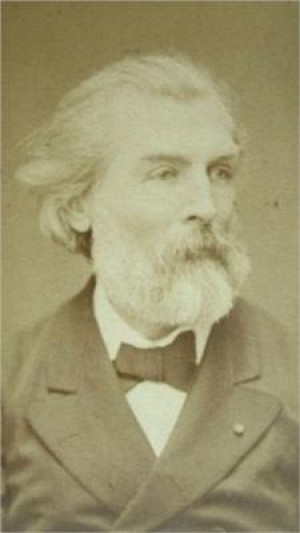Jules Dupré ( - )

Born in Nantes and died in Isle-Adam, Jules Dupré was a French landscape painter who, like Camille Corot, was a pioneer of French landscape painting and was influenced by John Constable. He left his studio and started painting outdoors in the 1830s, around Paris, Barbizon and in the Limousin.
His father, originally from Isle-Adam, ran a porcelain factory in Parmain before moving to Nantes. Jules Dupré first learned the art of ceramic decoration and admired Géricault, Le Lorrain and Rembrandt throughout his life.
In 1823, he arrived in Paris where he worked for an uncle who employed Auguste Raffet, Louis Cabat and Narcisse Diaz de la Peña. He also met Constant Troyon, a painter at the Sèvres factory. He was then admitted to the studio of the landscape painter Diébolt and sold his first paintings in Paris. He became a friend of the landscape painter Louis Cabat, who persuaded him to abandon ceramics and paint genre scenes and landscapes. He studied the Dutch painters of the 17th century, of whom he remained a great admirer, and in 1831 exhibited for the first time at the Salon with landscapes of the Limousin. In 1832, he stayed in Berry with Cabat and exhibited four works at the Salon of 1833 where he obtained a second class medal as a genre painter. He went to England in 1834 to study John Constable, the master of English landscape painting, who had a profound influence on his work. At the 1835 Salon, Eugène Delacroix congratulated him on the quality of his skies. He received many artists such as Scheffer and Barye at his home.
He frequented Barbizon with Théodore Rousseau. His relationship with Rousseau was fraternal, romantic, often stormy, almost exclusive at certain times. They have given rise to many comments. The reciprocal influence of the two men is one of the keys to the evolution of their works. Although Van Gogh probably never met Dupré during his stays in Paris, he showed a deep admiration for his elder brother throughout his life and had a very sharp eye for his work. Over a period of fifteen years, some sixty references can be found in Van Gogh's correspondence, mostly addressed to his brother Theo. These letters contain enthusiastic descriptions of Dupré's work. In his eyes, the painter embodied French romanticism and he frequently associated his name with that of Victor Hugo.
